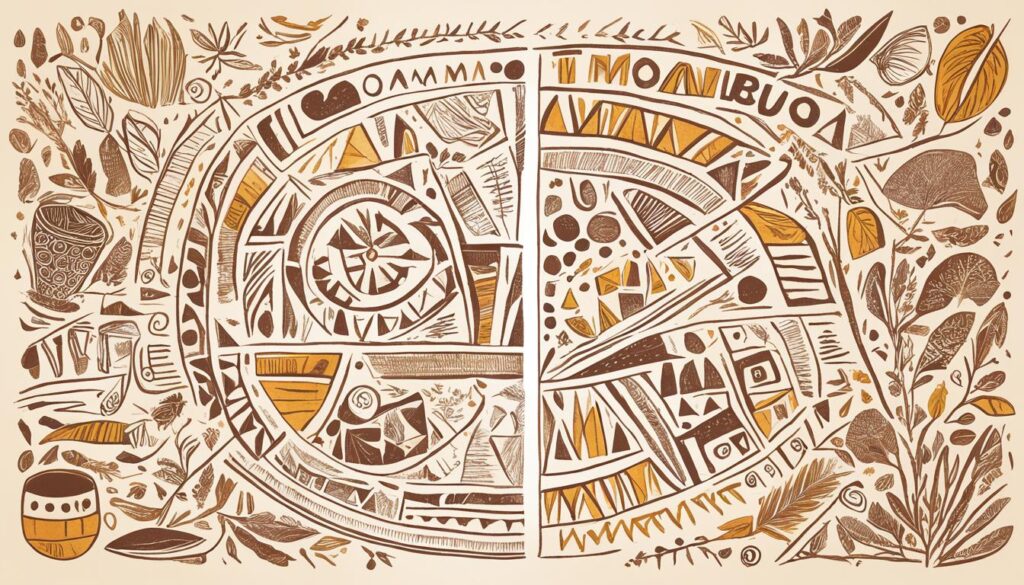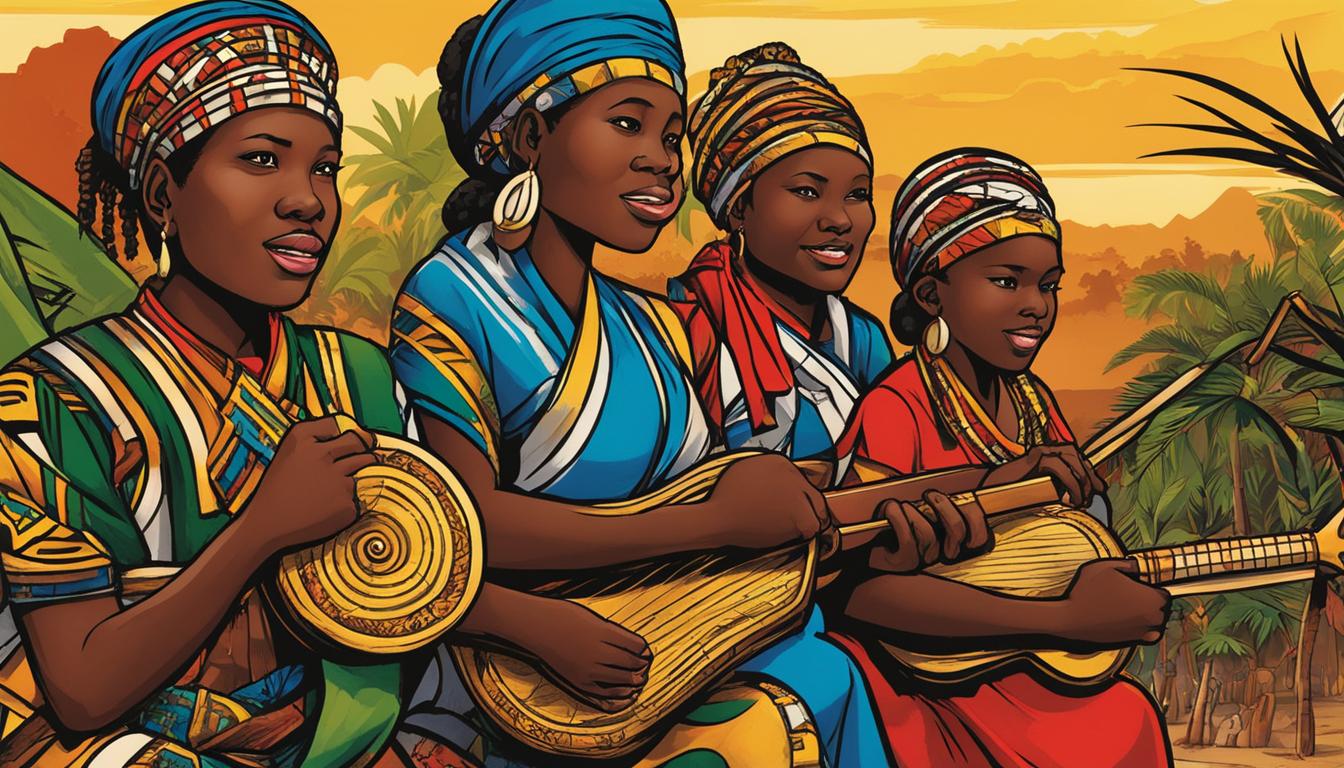Did you know that the Tswa-Ronga (Tsonga) Language is spoken by millions of people in Mozambique, South Africa, and Zimbabwe?
The Tswa-Ronga Language, also known as Tsonga, is a group of Southern Bantu languages with a significant cultural impact in Southern Africa. This diverse linguistic group consists of three main languages: Tswa-Ronga, Ronga, and Tsonga, each with their own dialects and linguistic nuances.
Throughout this article, we will explore the geographical distribution, linguistic classification, language varieties, writing system, history, and cultural significance of the Tswa-Ronga (Tsonga) Language. Join us on this fascinating journey to discover the rich and vibrant world of Tswa-Ronga culture and language.
Geographic Distribution and Linguistic Classification
The Tswa-Ronga languages, also known as Tsonga, have a primary concentration in southern Mozambique. However, smaller populations that speak these languages can also be found in northeastern South Africa and southeastern Zimbabwe. Consequently, the Tswa–Ronga languages have a significant presence in the southern regions of Africa.
These languages fall under the classification of Southern Bantu languages, which are part of the wider Niger-Congo language family. Within the Niger-Congo language family, the Tswa–Ronga languages belong to the Benue-Congo branch of the Atlantic-Congo division and the Bantu subgroup. This linguistic classification highlights the linguistic and cultural connections between the Tswa-Ronga languages and other Southern Bantu languages across southern Africa.
In text must include SEO relevant keywords – Tswa-Ronga (Tsonga) Language, Tsonga language, Tswa-Ronga, Southern Bantu languages, Southern Africa.
Language Varieties and Writing System
The Tswa-Ronga language group is comprised of three main varieties: Tswa, Ronga, and Tsonga. Each variety has its own unique dialects that contribute to the rich linguistic landscape of the Tswa-Ronga (Tsonga) Language.
Tswa, the first variety, encompasses several dialects, including Hlengwe, Tshwa, Mandla, Ndxhonge, and Nhayi. These dialects showcase the linguistic diversity within the Tswa-Ronga language group, with subtle variations in pronunciation, vocabulary, and grammar.
Ronga, the second variety, has its own distinct dialects, such as Konde, Putru, and Kalanga. These dialects highlight the regional differences and cultural nuances within the Ronga-speaking communities.
Tsonga, the most widely recognized variety of the Tswa-Ronga (Tsonga) Language, encompasses various dialects, including Luleke, Gwamba, Changana, Hlave, and Xonga. These dialects reflect the geographic spread and historical influences on Tsonga-speaking communities.
The Tswa-Ronga languages utilize the Sintu writing system, also known as Ditema tsa Dinoko. This writing system was developed specifically for the Tswa-Ronga languages, providing a consistent orthography that represents all three varieties under one unified framework. The Sintu writing system plays a critical role in preserving and promoting the Tswa-Ronga cultural heritage and facilitating written communication across the language group.
| Variety | Dialects |
|---|---|
| Tswa |
|
| Ronga |
|
| Tsonga |
|
Note: The table above provides an overview of the main varieties and dialects within the Tswa-Ronga (Tsonga) Language.

History and Identity
The Tswa-Ronga languages have a rich history that traces back to their origins in central Africa. As the Tswa people migrated southwards, they established settlements in southern Mozambique and neighboring regions. Within the larger Tsonga ethnic group, the Tswa people have their own distinct cultural identity.
During the colonial period, Portugal exerted a significant influence on the region, resulting in changes to the social structure of the Tswa people. Despite these external influences, the Tswa-Ronga languages and their unique cultural practices have remained resilient.
In 1975, Mozambique gained its independence, marking a new chapter in the history of the Tswa people. Since then, they have been an integral part of the diverse population of Mozambique, contributing to the country’s cultural heritage.
“Our language and culture are intertwined with our history. They are a testament to our resilience and identity as Tswa people within the larger Tsonga ethnic group.” – Representative from the Tswa community
The Impact of Colonialism
Colonialism played a significant role in shaping the history and identity of the Tswa people. The Portuguese colonization of Mozambique brought about changes in language, social structure, and cultural practices. Despite these challenges, Tswa-Ronga languages have survived and continue to flourish today.
Tswa-Ronga Cultural Practices
The Tswa people have a rich cultural heritage that is deeply rooted in their language. Traditional music, dance, and storytelling play a vital role in preserving their history and passing down ancestral knowledge. These cultural practices showcase the resilience and pride of the Tswa-Ronga community.
Preserving Tswa-Ronga Heritage
In recent years, efforts have been made to preserve the Tswa-Ronga languages and cultural heritage. Language revitalization programs, community initiatives, and educational resources aim to ensure the continued transmission and appreciation of Tswa-Ronga traditions to future generations.
| Key Points | Impact |
|---|---|
| Tswa-Ronga languages | Continued preservation and usage |
| Colonial influence | Changes to language and social structure |
| Cultural practices | Resilience and pride |
| Preservation efforts | Language revitalization and community initiatives |
Conclusion
The Tswa-Ronga (Tsonga) Language is a vital part of the Southern Bantu languages, spoken in Mozambique, South Africa, and Zimbabwe. With its unique linguistic features, vocabulary, and grammar, the Tswa-Ronga language carries the cultural heritage of the Tswa-Ronga people.
The Tswa-Ronga people have a rich history that has shaped their identity within the larger Tsonga ethnic group. They have contributed greatly to the diverse cultural tapestry of Southern Africa. Through their language and customs, the Tswa-Ronga people preserve their heritage and pass it on to future generations.
As a vibrant and culturally significant language, Tswa-Ronga (Tsonga) plays an essential role in connecting communities and fostering cultural pride. It is an integral part of Tswa-Ronga culture, enabling the expression of ideas, values, and traditions that shape the Tswa-Ronga way of life.
From its historical roots to its present-day significance, the Tswa-Ronga (Tsonga) Language continues to be cherished and celebrated as a treasure of the Southern Bantu languages. It serves as a testament to the rich linguistic diversity and cultural heritage of the Tswa-Ronga people, leaving an indelible mark on the region’s cultural landscape.
FAQ
What is the Tswa-Ronga (Tsonga) Language?
The Tswa-Ronga (Tsonga) Language is a group of closely related Southern Bantu languages primarily spoken in southern Mozambique, northeastern South Africa, and southeastern Zimbabwe. It is part of the larger Tsonga ethnic group and has its own unique linguistic features, vocabulary, and grammar.
Where is the Tswa-Ronga (Tsonga) Language primarily spoken?
The Tswa-Ronga (Tsonga) Language is primarily spoken in southern Mozambique, with smaller concentrations in northeastern South Africa and southeastern Zimbabwe.
What are the main varieties of the Tswa-Ronga (Tsonga) Language?
The main varieties of the Tswa-Ronga (Tsonga) Language are Tswa, Ronga, and Tsonga. Tswa has several dialects, including Hlengwe, Tshwa, Mandla, Ndxhonge, and Nhayi. Ronga also has its own dialects, Konde, Putru, and Kalanga. Tsonga has various dialects, such as Luleke, Gwamba, Changana, Hlave, and Xonga.
What writing system is used for the Tswa-Ronga (Tsonga) Language?
The Tswa-Ronga (Tsonga) Language uses the Sintu writing system, also known as Ditema tsa Dinoko. This system represents all Tswa-Ronga languages consistently under one orthography.
What is the history and cultural identity of the Tswa-Ronga people?
The Tswa-Ronga people have a rich history that dates back to their origins in central Africa. As the Tswa people migrated southwards, they settled in southern Mozambique and other neighboring areas. They have their own distinct cultural identity within the larger Tsonga ethnic group.
What is the significance of the Tswa-Ronga (Tsonga) Language?
The Tswa-Ronga (Tsonga) Language is a vibrant and culturally significant language that contributes to the diverse cultural heritage of Southern Africa. It plays an important role in the cultural expression and communication within the Tswa-Ronga community.
